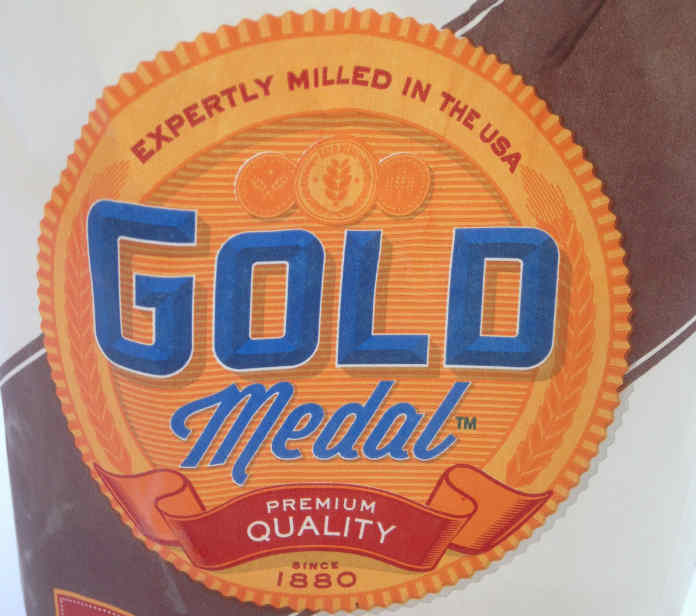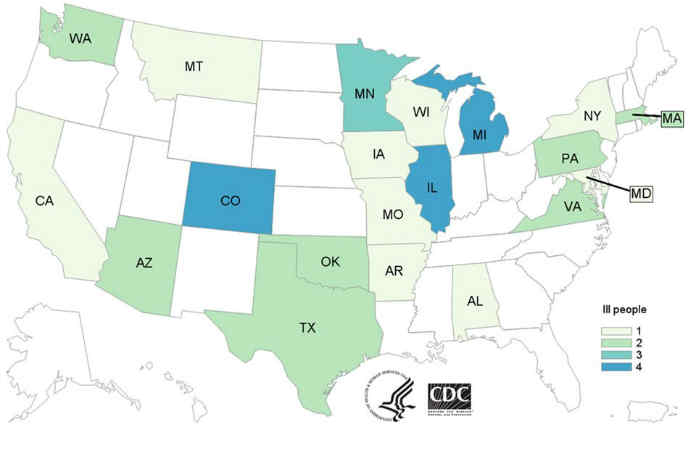The CDC has found that General Mills flour is a probably source of the outbreak of E. coli O121 illnesses that have made at least 38 people in the United States sick. , according to the CDC. A recall of General Mills flour includes certain lots of Gold Medal and Signature Kitchens brands.

The map below shows the states where there have been reports of people getting sick.
Of the 38 reports of illness so far, the earliest illness onset date was December 21, 2015, and the latest, May 3, 2016. Ten people ended up in the hospital. The range of ages goes from infants to someone over 90. Ill people range in age from 1 year to 95, with a median age of 18. Illnesses that occurred after May 5, 2016, if there are any, will be included in a later outbreak count. Given the widespread nature of this outbreak to date, we expect additional reports of E. coli poisoning.
E. coli O121 Outbreak Investigation Points to General Mills Flour
Whole-genome sequencing (WGS) showed that E. coli isolates from the 38 ill people are closely related genetically, meaning they most likely share a common source of infection.
The investigation, which includes CDC and FDA officials, indicates that flour produced in November of 2015 at General Mills’ Kansas City, Missouri facility is a likely source of this outbreak. This investigation is ongoing, and below are some of the questions that need answers:
- How did the flour get contaminated with E. coli O121?
- What processes were in place in the Missouri plant to prevent this kind of contamination?
- Where those processes followed?
- What testing was done on the flour before it was sold to consumers?
- Why didn’t General Mills find the contamination before it was sold to consumers?
In its latest update, the CDC reported on what health officials have determined based on interviews with 22 patients:
Twenty-one people said flour was used in their home before they got sick, with twelve of them stating the brand was Gold Medal. Twelve people ate or “played with” some unbaked dough or batter, nine at home and three at a restaurant.
If you decide to sue General Mills, the data gathered in these interviews may be able to be gathered for evidence. This requires a special legal process that our lawyers have used many times to get the information they need to build winning cases.
Once the flour was pinpointed as the common denominator, health officials collected used and unopened products in homes, restaurants, retailers and processing plants to test for contamination.
